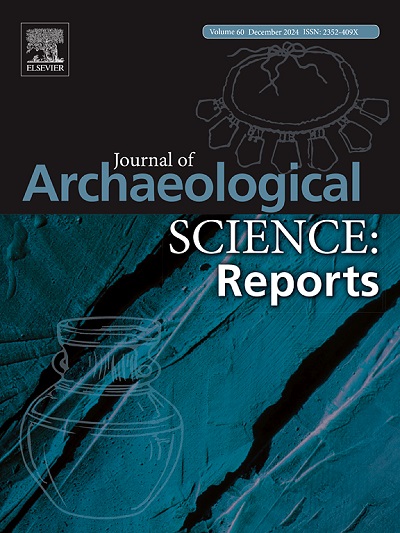Firewood exploitation in the Amu Darya valley of Uzbekistan from ca. 300 BCE to ca. 1400 CE
IF 1.5
2区 历史学
0 ARCHAEOLOGY
引用次数: 0
Abstract
This paper presents the results of the analysis of charcoal recovered during recent excavations in the ancient city of Termez and other sites in the Amu Darya region of Uzbekistan, dated between 300 BCE and 1400 CE. The charcoal analysis focused on the identification of taxa with the aim of approximating the acquisition and use of firewood. It showed the use of plants that grew in the riparian forests near the course of the Amu Darya during the time of the sequence. Tamarix sp., Fraxinus sp., and Salicaceae are the most abundant remains. Other taxa such as Elaeagnus sp., Vitis vinifera, Prunus sp., and Maloideae are also present. The increase in the consumption of certain riparian taxa over time, together with the decline of others, indicates the impact of human activities on local ecosystems and species availability. The presence of economic species, such as Vitis sp. or Ficus carica, and other potentially cultivated species such as Prunus sp., in the area suggests the introduction and early practice of arboriculture, possibly supported by water resources.
约公元前 300 年至约公元 1400 年乌兹别克斯坦阿姆河流域的木柴开采情况
本文介绍了最近在乌兹别克斯坦铁尔梅兹古城和阿姆河地区其他遗址发掘过程中发现的木炭的分析结果,这些木炭的年代在公元前 300 年至公元 1400 年之间。木炭分析的重点是鉴定分类群,目的是大致了解木柴的获取和使用情况。木炭分析表明,在该序列时期,人们使用了生长在阿姆河河道附近河岸森林中的植物。柽柳科、梣科和莎草科植物是最丰富的遗存。其他类群如榆树、葡萄树、樱桃树和马缨丹科植物也有分布。随着时间的推移,某些河岸分类群的消耗量增加,而其他分类群的消耗量则减少,这表明人类活动对当地生态系统和物种供应产生了影响。该地区经济树种(如葡萄树或榕树)和其他潜在栽培树种(如樱桃树)的存在表明,可能是在水资源的支持下,该地区引入了树木栽培技术并在早期进行了实践。
本文章由计算机程序翻译,如有差异,请以英文原文为准。
求助全文
约1分钟内获得全文
求助全文
来源期刊

Journal of Archaeological Science-Reports
ARCHAEOLOGY-
CiteScore
3.10
自引率
12.50%
发文量
405
期刊介绍:
Journal of Archaeological Science: Reports is aimed at archaeologists and scientists engaged with the application of scientific techniques and methodologies to all areas of archaeology. The journal focuses on the results of the application of scientific methods to archaeological problems and debates. It will provide a forum for reviews and scientific debate of issues in scientific archaeology and their impact in the wider subject. Journal of Archaeological Science: Reports will publish papers of excellent archaeological science, with regional or wider interest. This will include case studies, reviews and short papers where an established scientific technique sheds light on archaeological questions and debates.
 求助内容:
求助内容: 应助结果提醒方式:
应助结果提醒方式:


